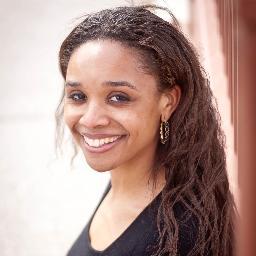
Photo used under Creative Commons License
Grace Williams, Business and Social Media Manager
“We invited Dr. Christena Cleveland here not to inspire us and affirm what we are already doing here. You won’t leave here patting your own back. We invited her to challenge us so that we can go into discomfort and create something better. Listen and learn and try to stay engaged even if you disagree,” said Kim Brandy of The Spero Project.
When I braved the cold and icy roads that shut down SNU on March 3rd, I was not expecting this kind of introduction. I came to the Classical Christian Academy gymnasium because I thought I was going to a talk that was part of the Marked event about ending human trafficking and oppression. That didn’t seem like a topic people would disagree on.
Marked, which had been scheduled but postponed the day before, is a conference about ending oppression worldwide and changing society’s mark on women so that God can put his redeeming mark on them. Rescheduled for April 6th, Marked will educate, mobilize and empower the Church in order to raise awareness and promote inentional and healthy steps to confront issues facing women.Check it out here: http://www.markedokc.com/
This talk was a part of the BenchMARK series that Spero Project hosts regularly to discuss relevant church issues. This talk was actually about diversity in the Church. Dr. Cleveland is an African American social psychologist that conducts research, teaches at St. Catherine’s University and travels around teaching organizations about diversity and Jesus’ radical calling to a love that breaks down all barriers.
Cleveland framed the problem and said, “Only 10% of churches are racially diverse. Only 5% of evangelical churches are diverse. The definition isn’t even good: if a church is 80% white and 20% other then it is classified as diverse but if a church is 80% black people and 20% white, then it is a black church.”
She identified four reasons that we don’t search for and reach out to people from diverse backgrounds. First, we categorize people into an us versus them mentality. Secondly, the category we assign someone is so simplistic that we miss the depth of the person and therefore see that person as having nothing to offer. Thirdly, we exaggerate the differences that exist between people when, in fact, there are many universals in the human experience. Finally, we believe that our cultural perspective is right and better compared with a different one.
Next, she offered advice on ways that we can bring more diversity into our communities. “Community leaders must model intercultural relationships, and communities must invest money into programs that reach multicultural needs. People need to seek out extended contact with someone from another race to create a true relationship. Having a common superordinate goal that boths groups are working for is a great way to come together.” said Cleveland.
Laura Miller, senior, asked Cleveland “I go to a predominantly white Christian school and the white people and the people from other racial groups hang out separately from each other for the most part. How can we change this?”
Cleveland said, “Find out what the minority students are already doing and participate with them. Don’t take it over -white people like to take things over but things don’t need to be fixed just because it may be different than what you are used. Focus on the similarities.”
I wish I could include all the vivid real life and biblical examples she gave throughout her two hour talk but it cannot be contained here. Cleveland wrote Disunity in Christ: Uncovering the Hidden Forces that Keep Us Apart which I encourage you to read for a more in depth discussion of how we can create more diverse communities of faith. Also check out her blog: http://www.christenacleveland.com/